#Gamma-ray burst
Explore tagged Tumblr posts
Text

An article published in the journal "Nature Astronomy" reports a study on the gamma-ray burst cataloged as GRB221009A, the brightest ever detected, which confirms that it was caused by the collapse of a massive star, which subsequently exploded in a supernova. A team of researchers led by Northwestern University used data collected with the James Webb Space Telescope and the ALMA radio telescope to obtain the information needed to support their conclusions. The mystery remains of the absence of traces of the generation of heavy elements such as platinum and gold, which they thought could be associated with supernovae that lead to very powerful gamma-ray bursts.
3 notes
·
View notes
Text
she gamma on my ray til i burst
1 note
·
View note
Text
Rare and mysterious cosmic explosion: Gamma-ray burst or jetted tidal disruption event?
New Post has been published on https://thedigitalinsider.com/rare-and-mysterious-cosmic-explosion-gamma-ray-burst-or-jetted-tidal-disruption-event/
Rare and mysterious cosmic explosion: Gamma-ray burst or jetted tidal disruption event?


Highly energetic explosions in the sky are commonly attributed to gamma-ray bursts. We now understand that these bursts originate from either the merger of two neutron stars or the collapse of a massive star. In these scenarios, a newborn black hole is formed, emitting a jet that travels at nearly the speed of light. When these jets are directed toward Earth, we can observe them from vast distances — sometimes billions of light-years away — due to a relativistic effect known as Doppler boosting. Over the past decade, thousands of such gamma-ray bursts have been detected.
Since its launch in 2024, the Einstein Probe — an X-ray space telescope developed by the Chinese Academy of Sciences (CAS) in partnership with European Space Agency (ESA) and the Max Planck Institute for Extraterrestrial Physics — has been scanning the skies looking for energetic explosions, and in April the telescope observed an unusual event designated as EP240408A. Now an international team of astronomers, including Dheeraj Pasham from MIT, Igor Andreoni from University of North Carolina at Chapel Hill, and Brendan O’Connor from Carnegie Mellon University, and others have investigated this explosion using a slew of ground-based and space-based telescopes, including NuSTAR, Swift, Gemini, Keck, DECam, VLA, ATCA, and NICER, which was developed in collaboration with MIT.
An open-access report of their findings, published Jan. 27 in The Astrophysical Journal Letters, indicates that the characteristics of this explosion do not match those of typical gamma-ray bursts. Instead, it may represent a rare new class of powerful cosmic explosion — a jetted tidal disruption event, which occurs when a supermassive black hole tears apart a star.
“NICER’s ability to steer to pretty much any part of the sky and monitor for weeks has been instrumental in our understanding of these unusual cosmic explosions,” says Pasham, a research scientist at the MIT Kavli Institute for Astrophysics and Space Research.
While a jetted tidal disruption event is plausible, the researchers say the lack of radio emissions from this jet is puzzling. O’Connor surmises, “EP240408a ticks some of the boxes for several different kinds of phenomena, but it doesn’t tick all the boxes for anything. In particular, the short duration and high luminosity are hard to explain in other scenarios. The alternative is that we are seeing something entirely new!”
According to Pasham, the Einstein Probe is just beginning to scratch the surface of what seems possible. “I’m excited to chase the next weird explosion from the Einstein Probe”, he says, echoing astronomers worldwide who look forward to the prospect of discovering more unusual explosions from the farthest reaches of the cosmos.
#2024#Astronomy and astrophysics#Astrophysics#black hole#Black holes#Carnegie Mellon University#CAS#Collaboration#cosmos#disruption#earth#Einstein Probe#Emissions#ESA#European Space Agency#event#explosions#extraterrestrial#Gamma-ray burst#gemini#international team#it#Kavli Institute#Light#luminosity#max#mit#monitor#neutron#neutron stars
0 notes
Text

Gamma Ray Burst (Id: noirlab2319a, Release date: 22 June '23), space art by Mark A. Garlick & Mahdi Zamani. Article:
1 note
·
View note
Text
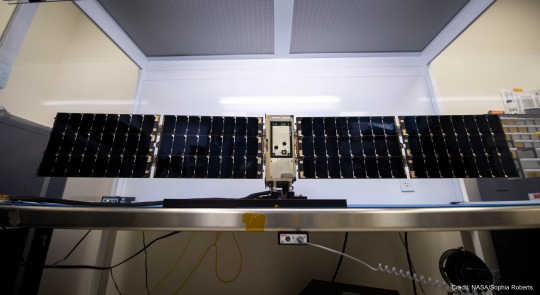
Tiny BurstCube's Tremendous Travelogue
Meet BurstCube! This shoebox-sized satellite is designed to study the most powerful explosions in the cosmos, called gamma-ray bursts. It detects gamma rays, the highest-energy form of light.
BurstCube may be small, but it had a huge journey to get to space.
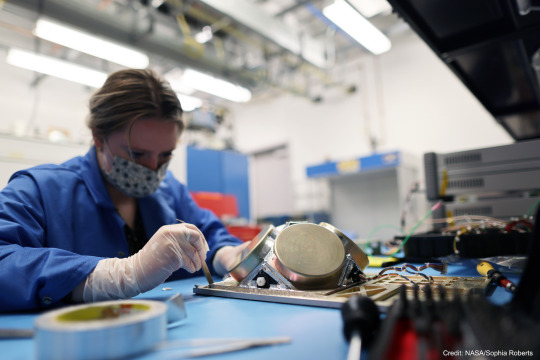
First, BurstCube was designed and built at NASA’s Goddard Space Flight Center in Greenbelt, Maryland. Here you can see Julie Cox, an early career engineer, working on BurstCube’s gamma-ray detecting instrument in the Small Satellite Lab at Goddard.
BurstCube is a type of spacecraft called a CubeSat. These tiny missions give early career engineers and scientists the chance to learn about mission development — as well as do cool science!
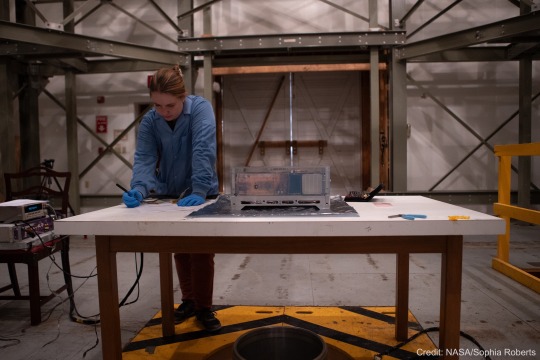
Then, after assembling the spacecraft, the BurstCube team took it on the road to conduct a bunch of tests to determine how it will operate in space. Here you can see another early career engineer, Kate Gasaway, working on BurstCube at NASA’s Wallops Flight Facility in Virginia.
She and other members of the team used a special facility there to map BurstCube’s magnetic field. This will help them know where the instrument is pointing when it’s in space.

The next stop was back at Goddard, where the team put BurstCube in a vacuum chamber. You can see engineers Franklin Robinson, Elliot Schwartz, and Colton Cohill lowering the lid here. They changed the temperature inside so it was very hot and then very cold. This mimics the conditions BurstCube will experience in space as it orbits in and out of sunlight.
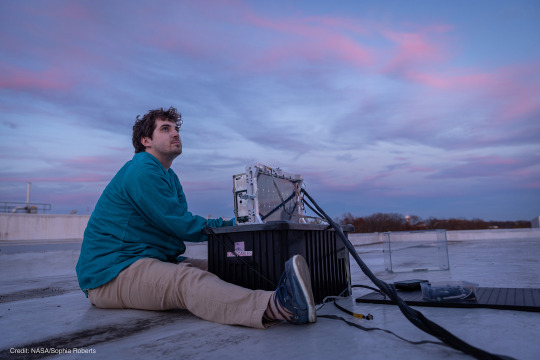
Then, up on a Goddard rooftop, the team — including early career engineer Justin Clavette — tested BurstCube’s GPS. This so-called open-sky test helps ensure the team can locate the satellite once it’s in orbit.
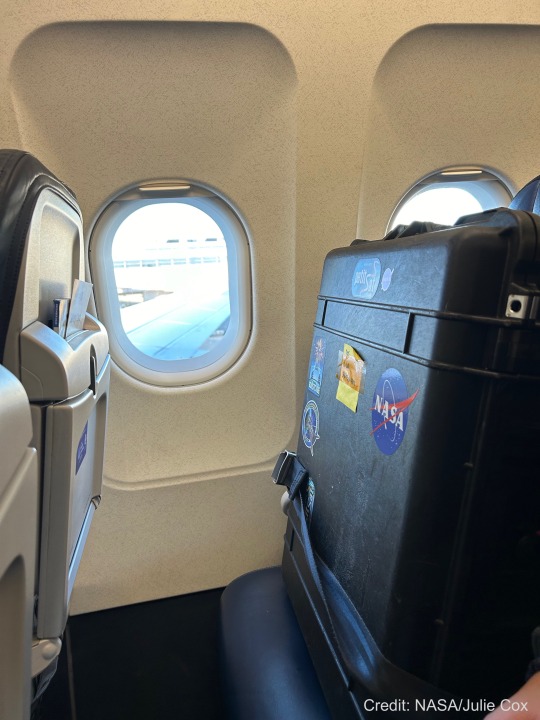
The next big step in BurstCube’s journey was a flight to Houston! The team packed it up in a special case and took it to the airport. Of course, BurstCube got the window seat!

Once in Texas, the BurstCube team joined their partners at Nanoracks (part of Voyager Space) to get their tiny spacecraft ready for launch. They loaded the satellite into a rectangular frame called a deployer, along with another small satellite called SNoOPI (Signals of Opportunity P-band Investigation). The deployer is used to push spacecraft into orbit from the International Space Station.
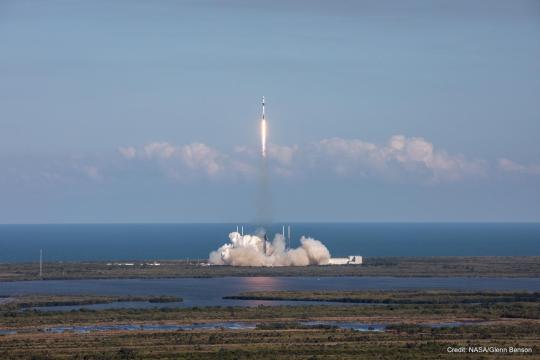
From Houston, BurstCube traveled to Cape Canaveral Space Force Station in Florida, where it launched on SpaceX’s 30th commercial resupply servicing mission on March 21, 2024. BurstCube traveled to the station along with some other small satellites, science experiments, as well as a supply of fresh fruit and coffee for the astronauts.
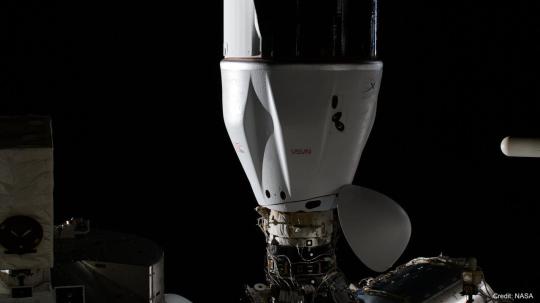
A few days later, the mission docked at the space station, and the astronauts aboard began unloading all the supplies, including BurstCube!
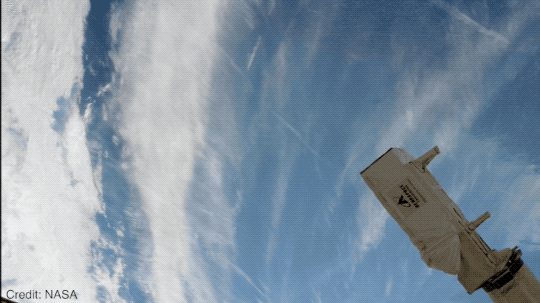
And finally, on April 18, 2024, BurstCube was released into orbit. The team will spend a month getting the satellite ready to search the skies for gamma-ray bursts. Then finally, after a long journey, this tiny satellite can embark on its big mission!

BurstCube wouldn’t be the spacecraft it is today without the input of many early career engineers and scientists. Are you interested in learning more about how you can participate in a mission like this one? There are opportunities for students in middle and high school as well as college!
Keep up on BurstCube’s journey with NASA Universe on X and Facebook. And make sure to follow us on Tumblr for your regular dose of space!
#tech#technology#dream job#jobseekers#NASA#space#spaceblr#universe#astronomy#science#gamma ray bursts#cubesat#smallsat#launch
663 notes
·
View notes
Text
After its "birth" in the Big Bang, the Universe consisted mainly of hydrogen and a few helium atoms. These are the lightest elements in the periodic table. More-or-less all elements heavier than helium were produced in the 13.8 billion years between the Big Bang and the present day. Stars have produced many of these heavier elements through the process of nuclear fusion. However, this only makes elements as heavy as iron. The creation of any heavier elements would consume energy instead of releasing it. In order to explain the presence of these heavier elements today, it's necessary to find phenomena that can produce them.
Continue Reading.
#Science#Space#Astronomy#Physics#Gamma-Ray Bursts#Brightest of All Time#BOAT#James Webb Space Telescope#JWST
66 notes
·
View notes
Text

Optical Transient Near GRB970508 Shows Distant Redshift - May 13th, 1997.
"The GRB distance scale controversy might have ended with a flash. Gamma Ray Bursts (GRBs) are powerful explosions occurring in seemingly random positions in the sky. They are so featureless and so poorly resolved, however, that their distances could not be determined. On May 8th, 1997, the orbiting Beppo-Sax Satellite detected and precisely located a GRB (GRB970508), quickly relaying its position to astronomers. Within hours, many of the world's most powerful telescopes were re-pointed in the direction of the new GRB. There they found a faint but variable optical source: a potential counterpart to the gamma-ray burst that was getting brighter. Most importantly, continued scrutiny showed that this optical transient had absorption lines with a redshift of about 0.8 - the distance scale of galaxies and quasars. If this source and GRB970508 were related, the GRB itself must be many billions of light-years away, and the 30-year controversy on the distance scale to GRBs would draw dramatically to a close. GRBs would move from the realm of astronomical mystery to useful beacons of the early Universe. Above is a "negative" image of the GRB970508 field, located near the north celestial pole, taken hours after the initial flash of gamma rays. The faint optical transient source is inside the box. North is up and the image is 2.5 arcminutes across (about a tenth the size of the full Moon)."
16 notes
·
View notes
Text

Traveling Stars
154 notes
·
View notes
Text
The Rare Earth hypothesis used to distress me a lot when I was younger but nowadays it's kind of comforting to know that life-bearing planets are in manageable numbers to my brain. Because 40 billion habitable planets in the galaxy is a bit too much for my head.
#cosas mias#it is also kind of distressing to think how many 'failed earths' there must be though#planets that COULD have been like Earth but didn't (hell even in our Solar System we have Mars and Venus)#or worse planets that did evolve a complex biosphere that was destroyed by asteroid collissions gamma ray bursts or whatever the fuck
41 notes
·
View notes
Text

NASA's mini BurstCube mission detects mega blast
The shoebox-sized BurstCube satellite has observed its first gamma-ray burst, the most powerful kind of explosion in the universe, according to a recent analysis of observations collected over the last several months.
“We’re excited to collect science data,” said Sean Semper, BurstCube’s lead engineer at NASA’s Goddard Space Flight Center in Greenbelt, Maryland. “It’s an important milestone for the team and for the many early career engineers and scientists that have been part of the mission.”
The event, called GRB 240629A, occurred on June 29 in the southern constellation Microscopium. The team announced the discovery in a GCN (General Coordinates Network) circular on August 29.
BurstCube deployed into orbit April 18 from the International Space Station, following a March 21 launch.
The mission was designed to detect, locate, and study short gamma-ray bursts, brief flashes of high-energy light created when superdense objects like neutron stars collide. These collisions also produce heavy elements like gold and iodine, an essential ingredient for life as we know it.
BurstCube is the first CubeSat to use NASA’s TDRS (Tracking and Data Relay Satellite) system, a constellation of specialized communications spacecraft. Data relayed by TDRS (pronounced “tee-driss”) help coordinate rapid follow-up measurements by other observatories in space and on the ground through NASA’s GCN.
BurstCube also regularly beams data back to Earth using the Direct to Earth system — both it and TDRS are part of NASA’s Near Space Network.
After BurstCube deployed from the space station, the team discovered that one of the two solar panels failed to fully extend. It obscures the view of the mission’s star tracker, which hinders orienting the spacecraft in a way that minimizes drag. The team originally hoped to operate BurstCube for 12-18 months, but now estimates the increased drag will cause the satellite to re-enter the atmosphere in September.
“I’m proud of how the team responded to the situation and is making the best use of the time we have in orbit,” said Jeremy Perkins, BurstCube’s principal investigator at Goddard. “Small missions like BurstCube not only provide an opportunity to do great science and test new technologies, like our mission’s gamma-ray detector, but also important learning opportunities for the up-and-coming members of the astrophysics community.”
BurstCube is led by Goddard. It’s funded by the Science Mission Directorate’s Astrophysics Division at NASA Headquarters. The BurstCube collaboration includes: the University of Alabama in Huntsville; the University of Maryland, College Park; the Universities Space Research Association in Washington; the Naval Research Laboratory in Washington; and NASA’s Marshall Space Flight Center in Huntsville.
IMAGE: BurstCube, trailed by another CubeSat named SNOOPI (Signals of Opportunity P-band Investigation), emerges from the International Space Station on April 18, 2024. Credit NASA/Matthew Dominick
5 notes
·
View notes
Link
In this episode of SpaceTime, we explore the possibility of Mercury harbouring a thick layer of solid diamond deep below its ancient surface. We also delve into new details about the brightest gamma ray burst of all time and discuss the recent surge in auroral activity as the sun approaches solar maximum. Join us for these fascinating updates and more! For more SpaceTime visit our website at www.spacetimewithstuartgary.com For more Space News podcasts, visit our HQ at www.bitesz.com
#activity#auroral#bepicolombo#burst#diamonds#esa#fermi#field#gamma#jaxa#magnetic#max#mercury#nasa#ray#solar#space#storms#sunspots#telescope
2 notes
·
View notes
Text
The Goldmine of a Neutron Star Collision - Technology Org
New Post has been published on https://thedigitalinsider.com/the-goldmine-of-a-neutron-star-collision-technology-org/
The Goldmine of a Neutron Star Collision - Technology Org
International research team models the different signatures of a kilonova explosion simultaneously for the first time.
Neutron stars are the end products of massive stars and gather together a large part of the original stellar mass in a super-dense star with a diameter of only around ten kilometres. On 17 August 2017, researchers observed the manifold signatures of an explosive merger of two orbiting neutron stars for the first time: gravitational waves and enormous bursts of radiation including a gamma-ray burst.
An international research team has developed a method to model these observable signals of a kilonova simultaneously. This enables them to precisely describe what exactly happens during a merger, how nuclear matter behaves under extreme conditions and why the gold on Earth must have been created in such events.
Numerical simulation of the resulting ejecta material of two merging neutron stars. Red colors refer to ejected material with a high fraction of neutrons which will appear typically redder than blue material that contains a higher fraction of protons. Image credit: I. Markin (University of Potsdam)
Using a new software tool, a team involving the Max Planck Institute for Gravitational Physics and the University of Potsdam has succeeded in simultaneously interpreting the various types of astrophysical data from a kilonova.
In addition, data from radio and X-ray observations of other neutron stars, nuclear physics calculations and even data from heavy-ion collision experiments on earthbound accelerators can be used. Until now, the various data sources have been analysed separately and the data interpreted using different physical models in some cases.
“By analysing the data coherently and simultaneously, we get more precise results,” says Peter T. H. Pang, scientist at Utrecht University.
“Our new method will help to analyze the properties of matter at extreme densities. It will also allow us to better understand the expansion of the universe and to what extent heavy elements are formed during neutron star mergers,” explains Tim Dietrich, professor at the University of Potsdam and head of a Max Planck Fellow group at the Max Planck Institute for Gravitational Physics.
Extreme conditions in a cosmic laboratory
A neutron star is a superdense astrophysical object formed at the end of a massive star’s life in a supernova explosion. Like other compact objects, some neutron stars orbit each other in binary systems.
They lose energy through the constant emission of gravitational waves – tiny ripples in the fabric of space-time – and eventually collide. Such mergers allow researchers to study physical principles under the most extreme conditions in the universe.
For example, the conditions of these high-energy collisions lead to the formation of heavy elements such as gold. Indeed, merging neutron stars are unique objects for studying the properties of matter at densities far beyond those found in atomic nuclei. The new method was applied to the first and so far only multi-messenger observation of binary neutron star mergers.
In this event, discovered on August 17, 2017, the stars’ last few thousand orbits around each other had warped space-time enough to create gravitational waves, which were detected by the terrestrial gravitational-wave observatories Advanced LIGO and Advanced Virgo. As the two stars merged, newly formed heavy elements were ejected.
Some of these elements decayed radioactively, causing the temperature to rise. Triggered by this thermal radiation, an electromagnetic signal in the optical, infrared, and ultraviolet was detected up to two weeks after the collision.
A gamma-ray burst, also caused by the neutron star merger, ejected additional material. The reaction of the neutron star’s matter with the surrounding medium produced X-rays and radio emissions that could be monitored on time scales ranging from days to years.
Source: MPG
You can offer your link to a page which is relevant to the topic of this post.
#accelerators#Astronomy news#atomic#atomic nuclei#binary#binary systems#Blue#collisions#colors#data#earth#electromagnetic#Emissions#energy#Events#Featured Space news#Fraction#Fundamental physics news#Gamma-ray burst#gold#gravitational waves#how#indeed#it#life#LIGO#Link#mass#massive stars#material
0 notes
Text
SciTech Chronicles. . . . . . . . .May 1st, 2025
#polylactic#forming#healing#support#“gamma-ray burst”#heavy elements"#INTEGRAL#SGR 1806-20#TBI#rmTBI#edema#“blood-brain barrier”#“Cascadia subduction zone”#subsidence#“Juan de Fuca”#Gorda#connectivity#redundant#Texas#Florida
1 note
·
View note
Text
In October 2022, astronomers were stunned by what was quickly dubbed the BOAT—the brightest-of-all-time gamma-ray burst (GRB). Now an international science team reports that data from NASA's Fermi Gamma-ray Space Telescope reveals a feature never seen before. "A few minutes after the BOAT erupted, Fermi's Gamma-ray Burst Monitor recorded an unusual energy peak that caught our attention," said lead researcher Maria Edvige Ravasio at Radboud University in Nijmegen, Netherlands, and affiliated with Brera Observatory, part of INAF (the Italian National Institute of Astrophysics) in Merate, Italy. "When I first saw that signal, it gave me goosebumps. Our analysis since then shows it to be the first high-confidence emission line ever seen in 50 years of studying GRBs." A paper about the discovery appears in the journal Science.
Continue Reading.
35 notes
·
View notes
Text

Gamma Ray Burster - March 19th, 1997.
"Where and what are the Gamma-Ray Bursters? At the time of their discovery in the early 1970s, nobody was able to explain the cause of mysterious flashes of gamma rays that came from seemingly random directions in the sky. Worse yet, it was even unclear whether these high energy explosions originated in our own galaxy, or in distant galaxies across the Universe. Until late February, 1997, these bursters were known only by their gamma-ray flashes - no counterpart had been seen at any other wavelength. But on February 28th, an Italian/Dutch satellite known as BeppoSAX detected what may well have been X-rays from a burster, eight hours after the gamma-ray flash. The discovery image is shown above. Hours later, using the position provided by this X-ray image, ground-based telescopes recovered an even better located variable optical source, which also seemed to be related to the burster. Dramatically, this optical transient has faded now. In its place lies a steady source that appears to be a dim, distant galaxy."
13 notes
·
View notes